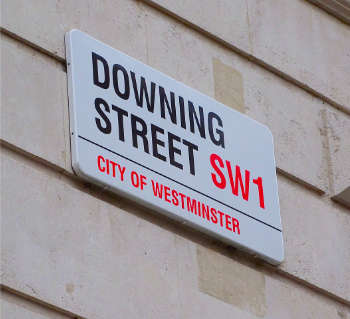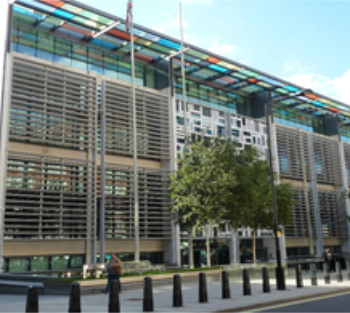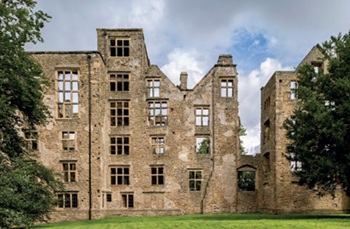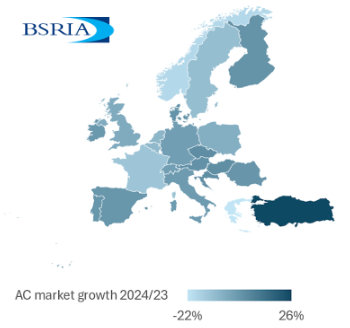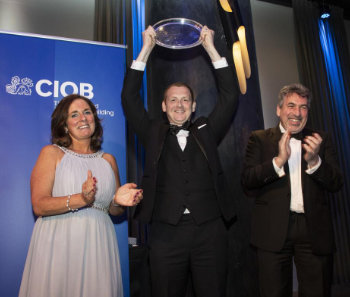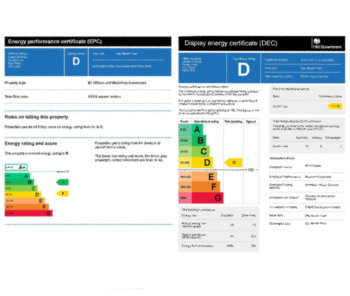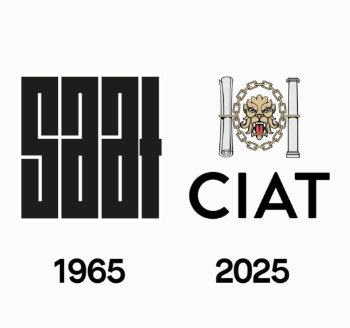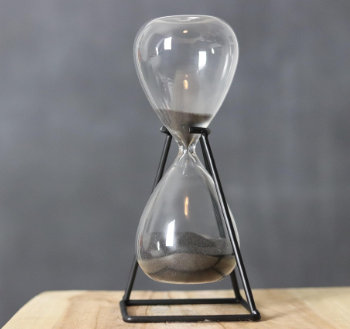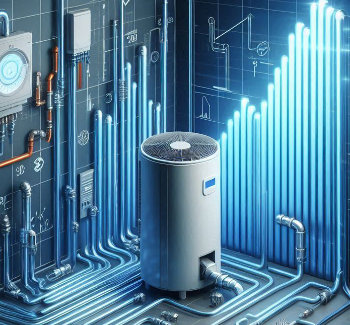Smart building systems
Contents |
[edit] Building smart building systems
Building management systems (BMS) are becoming closer to an IT solution than a mere heating and ventilation control system. However, very few building developers are embracing the technology available, primarily because the shell and core construction philosophy does not make financial sense to a construction team.
There are possible contractual constraints in that the use and advantage of the technology is only available and visible over the life of the building, so why should a developer invest in a benefit that could be added later by the building occupier?
Smart, secure, analytics and straightforward room and plant control are without doubt merging onto a common platform that is being driven by the BMS specialists who are providing control systems generally based on a Niagara platform that offers control strategy, system interfacing and analytic ready solutions. Suppliers can of course provide less smart systems at lower costs but it should be remembered that the intelligent controllers probably only represent about 15% of a project cost so even a 50% controller cost saving only gives a 7.5% project saving and that is often insufficient to tip the balance where smart constructors are used.
Smart Building Overlay to the RIBA Plan of Work, published by the RIBA in 2024, states in relation to smart building systems: ‘A smart building involves the installation and use of advanced and integrated building technology systems and software. These systems include building automation, life safety, telecommunications, user systems, and facility management systems.’
[edit] Summary
The development of a smart building management system greatly depends upon the ability of the contract to carry the cost in the construction phase, the knowledge that the system cannot be measured as a physical item at practical completion and that the facilities management (FM) team have a hands-on approach during the day-to-day operation.
In summary there are a number of aspects considered for a smart building services environment:
- Network security should be designed by the network IT specialist.
- The BMS should reside on a specialist designed network and within his own VLAN.
- Secure password with timeout should be implemented for the BMS controllers.
- Additional sensors such as temperature across each coil and vibration monitors installed for each drive.
- Provide energy and utility metering for system performance analysis.
- Analytical hardware system gateway such as JACE 8000 provided at the construction phase.
- Automated plant maintenance routines to be implemented.
- Design the MEP plant and equipment not just the BMS for the smart environment.
- Have an agreed BMS point naming strategy.
- Provide bespoke dashboards that are useful to the FM team.
- Integrate the BMS with the asset management and maintenance packages.
- Provide sufficient time for the commissioning of the BMS and the smart building environment.
[edit] Smart
Buildings Performance Institute Europe (BPIE) have defined 'smart' as:
A smart building is highly energy efficient and covers its very low energy demand to a large extent by on-site or district- system-driven renewable energy sources. A smart building (i) stabilises and drives a faster decarbonisation of the energy system through energy storage and demand-side flexibility; (ii) empowers its users and occupants with control over the energy flows; (iii) recognises and reacts to users’ and occupants’ needs in terms of comfort, health, indoor air quality, safety as well as operational requirements.
Perhaps a summary of this is to provide, (i) energy efficient building services solutions which may include natural ventilation, heat recovery systems and controls that more closely follow the building occupancy levels (ii) occupant adjustable set points and plant operation (iii) room temperatures that follow the seasons, fresh air to maintain low CO2 levels, displacement air conditioning supply and reliable plant operation in the event of local system faults.
[edit] Security
The biggest perceived threat to an integrated solution BMS is that the control system can be hacked into and data gathered, perhaps plant operating status adjusted or the BMS could be used as a conduit to further systems that might have nothing to do with engineering services.
Perhaps the use of an open protocol BMS is a weakness that should be avoided. By the very nature of the open system it is possible to read and write to plant that is connected to the BMS even if it has its own standalone control system.
Many BMS installations are connected to third party equipment such as lifts, chillers, lighting systems, computer room cooling units through high level software interfaces as well as hardwired connections. Often the BMS server/PC is plugged into the FM team network that allows the FM team to access the BMS from any PC using a browser. If this access is available then it is likely that wireless access is also provided for the FM team. It can quickly be seen that anybody with access to the FM network could possibly have unrestricted BMS access.
If the BMS is not connected to the world wide web (www) then security becomes easier to handle as now the problem is one of local management. Furthermore if the BMS is on a separate physical network and not joined to the FM network access to other parts of the business are not possible via a BMS port.
In practical terms having the BMS on a separate network and only allowing specific operators access is not feasible. Whether or not the BMS has high level access to third party systems or hardwired connections, it is still possible for the main plant to have its set points changed or turned on and off.
Perhaps the most damage could be done by interrupting electrical supplies. There are very few commercial buildings that actually have load shedding and very few have automatically controlled breakers. Where motorised breakers are used to switch loads, these are generally controlled by a PLC that stands alone from any system. The BMS may monitor the breaker position but does not generally have controlled electrical breakers.
There are some projects that utilise local switching of desk power to conserve energy at night. A lot is dependent upon the design of the desk PC system. If the desk PC is just an access point to a central server/PC then loss of power at the desk is a nuisance but not business critical. If the desk PC is handling data then perhaps this is more serious. However so long as the electrical system is a robust design with PCs connected to permanently powered sockets then this issue is managed.
There are simple procedures that can be put in to place, this does assume that the hacker does not have access to the operating software, such as complex password access control, timing users out, regularly changing passwords. Furthermore the software should have sensible limits set such that room temperatures can only be changed by a few degrees, similarly Chilled water and heating set points have limited adjustment. Perhaps also all user adjustable set points should revert back to an agreed standard every 24 hours so that any malicious or even mistaken changes only operate in the short term.
The best way to manage the BMS IT network is to use a specialist network designer. Under no circumstances should a BMS contractor design networks, they are not qualified for the task.
The network should incorporate managed switches with the BMS and other systems running on Virtual LANs, in this way the security of the BMS and other systems is managed by a layer 3 switch.
The use of the VLANs is a must have system and this should be managed by the IT team. Over and above this the BMS specialist should not be allowed to provide switches within the panel that is often their desire. It is agreed that this can cause issues to the BMS specialist insomuch that sometimes the system keypad may have to be wired to a managed switch in a riser shaft with the control panel being viewed via this network rather than directly at the control panel.
There is some debate on whether or not terminal devices such as fan coil units or chilled beam controllers should have RJ 45 connections back to managed switches or make standard use of BACnet MSTP communications. To be truthful there are not many terminal unit controllers that have RJ 45 connectivity, there are some such as EasyIO, Schneider but that’s probably about it. Furthermore if you’re not careful you could end up with hundreds of Cat 5a horizontal runs from terminal devices to the managed switches. It is possible to daisy chain some RJ 45 controllers but that all gets quite difficult, in my opinion fan coil units on RS-485 that are wired back to BMS controllers which in turn are connected to the managed switches is the more practical solution.
Simple housekeeping such as fixed IP addresses, robust passwords, no spare ports or ports provided with lockable end plugs and assigning particular switch ports to only accept information from a defined device via its MAC address. All of these activities should be carried out by the IT team.
It is best left to the expert network provider to configure cyber security at the network level.
At the BMS controller level security should be established through robust password management, software configuration with fixed limits and ensuring that controller communications is locked down.
[edit] 1.4 Analytics
There has been a great play made by many suppliers that analytics will be the solution to poorly operating systems. Undoubtedly the data gathered is useful however, most analytical programs tend to point the user in the direction of poorly performing plant but does not offer solutions to these issues.
Gathering the data for analytics can be a mammoth task and generally the default method is to provide a JACE 8000 that can manage up to 10,000 field/virtual points. The data is discovered via a BACnet tool and exported to a analytics program which can either be on-site or in a cloud environment. However, it’s never as easy as that and things like naming convention need to be to a common standard most likely Haystack.
The analytics does not have to be in place at the point of project completion however it will be advantageous if the additional sensors are provided along with the means to transport the information.
If analytics or indeed any preventative maintenance and system analysis is required then consideration should be given to inclusion of additional sensors that may offer benefit for the analysis. It will always be easier to install these devices during the construction phase than add later.
For simple fan coil units there should always be supply and return air temperature sensors with perhaps consideration given to local heat meters (these must be BACnet) that can provide water flow rates and system temperatures. Belimo for instance provide an electronically controlled modulating valve with associated temperature sensors that form part of a heat meter suitable for use on fan coil units.
[edit] Maintenance routines
It is often the case that plant maintenance is only carried out periodically and possibly by the BMS FM team who may only visit the site once a month. There is absolutely no reason why automatic maintenance routines should not be made available for use by the FM team either automatically on a time basis or manually selected. For instance a fan coil unit can be run in full heating/cooling and the on and off temperatures reviewed to check that the valves are both operating and that chilled and heating is available at the fan coil unit. In a similar manner an air handling plant can be operated and the air on and off temperatures of each coil reviewed to check that the valves are operating and that primary services are available.
Where CO2 sensors are used there is no reason why ventilation plant should not be run in the unoccupied mode (perhaps at the same time as the heating cooling checks) and the CO2 sensors should all be reading about the same value, those that are not should be investigated.
It is possible to determine plant coefficient of performance perhaps measuring the electrical power consumed by a chiller compared to the chilled water being produced. If this value is changing over time then the reason should be investigated. In a similar manner boiler gas consumption can be compared to heat energy produced and investigated if necessary.
Perhaps comparing energy absorbed against outside air temperature, although there are lots of other mitigating factors, can provide some guidance of changing plant efficiency.
[edit] Occupancy timers
There are numerous projects where the occupancy time, whether this is a fixed time or optimisers are established at the day of handover and then never adjusted. It is possible to link the BMS to the IT system such that the approximate density of occupants can be measured by the number of Wi-Fi devices connected which can then be displayed on the BMS head end allowing the user to adjust the start times manually. There are one or 2 commercially available software configurations that can do this automatically although I personally have never used one.
Perhaps CO2 sensing can be used as a people counter or an integration between the BMS and the security swipe cards.
[edit] Sensors
To provide system monitoring it may be necessary to add additional sensors other than those normally provided for the control strategy. Although each plant item shall be considered on an individual basis it is very straightforward to add temperature sensors across all AHU heating cooling coils, fan coil unit supply air sensors, along with space and return air CO2 sensors. Other considerations on other projects have included differential pressure sensors across filters rather than pressure switches and some systems have included these on fan coil units, vibration sensing has been implemented on some projects and where belt driven drives are used the motor speed and the pump/fan speed have been compared to evaluate slipping belts.
Energy metering both hot and chilled along with electrical meters and water meters can provide information on system use. There may be for instance toilets that are very lightly used (determined by the water flow rate per day) and perhaps these don’t require cleaning quite so often, electrical meters can be used to determine whether or not plant is running excessively or perhaps increasing electrical load even though the plant should in theory be running at constant load, heat meters can be used to determine areas of the building that are calling for excessive heat or coolth.
[edit] Air quality
Air quality is seen as a benefit and challenge both within the building and in the general environment, there are 6 levels of air quality that are based upon the measurement of such things as: particulate size, carbon monoxide, sulphur dioxide, ozone, nitrogen dioxide. These can be recorded and calculation carried out to determine the air quality index which is defined as below:
| AQI | Air pollution level | Health implications |
| 0 - 50 | Good | Air quality is considered satisfactory, and air pollution poses little or no risk |
| 51-100 | Moderate | Air quality is acceptable however, for some pollutants it may be a moderate health concern for a very small number of people who are unusually sensitive to air pollution |
| 101-150 | Unhealthy for sensitive groups | Members of sensitive groups may experience health effects. The general public is not likely to be affected |
| 151-200 | Unhealthy | Everyone may begin to experience health effects, members of sensitive groups may experience more serious health effects |
| 201-300 | Very unhealthy | Health warnings of emergency conditions. The entire population is more likely to be affected |
| 300+ | Hazardous | Health alert, everyone may experience more serious health effects |
For the external environment there are websites available in around the London area that set out the current air quality index.
Within the building, it is probably sufficient to measure the particulate matter 2.5 and particulate matter 10 levels, as these appear to be the main drivers.
Carbon Dioxide is fairly straightforward to measure and it is this gas within the building that is probably the one that affects general performance and well-being the most. This value needs to be kept at about 800 ppm.
[edit] User interface
There is a consideration to be made that the office occupant should be given access and knowledge regarding the environment with his local area. This can sometimes be a difficult path as some engineers and some FM teams do not want the occupant to be aware of what is going on nor be able to change their set points. In the past we have talked about placebo temperature adjusters and perhaps vague temperature displays. We have to accept as engineers that the occupant is a sensible person and the data has to be made available to them.
These interfaces can be via apps on their phone, by wall mounted display units or perhaps information directly onto their PC.
The use of this technology is increasing but is not robust and it is very job specific nevertheless we have to move forward and assume that this type of interaction is required.
Via an app the user should be allowed to adjust their local temperature and turn plant on and off, it is agreed that when multiple users have a few terminal devices this can cause a problem but these need to be managed. These changes however must be limited to reasonable set points and every 24 hours the system will revert back to the base point. If a user adjusters the temperature up or down then the message should be sent back to the user in general terms describing the additional energy or reduction that this change may make.
The use of integrated meeting room booking systems and lighting/heating cooling is a pretty standard arrangement. However, in reality it’s probably easier to use PIR’s and allow the room not to become too hot or too cold when unoccupied.
The use of QR codes should be considered by the FM team to identify plant and equipment and provide access to web sites containing maintenance and plant operating data.
Follow me Printing, Way Finding, Find my colleague, Agile Workspace, all of these are technologies available but generally sit outside the BMS although they form part of the general building smart environment. These systems should be set to work by a specialist supplier of this equipment rather than try to integrate these into the BMS. If agile workspace can be integrated to the BMS then user specific requirements for that individual could be switched on when they are at their desk.
The BMS should integrate with the asset management system and any plant maintenance systems, for as an example repeat alarms can be flagged in the maintenance system along with hours run whilst the asset management is used to track the plant location and provide O and M manuals on any handheld display.
The operating and maintenance manuals for the BMS must be saved to and have access from the BMS PC, normally these are just in boxes in the dusty cupboard.
It would be expected that the FM team makes use of handheld displays for both access to the BMS from any location either within or without of the building. This access however must be via the converged network security system.
[edit] System dashboards
A system dashboard can mean many things to many people in truth it is just a BMS graphic with site wide data rather than a specific plant item operating details. What is more important is that the end user can perhaps develop their own dashboards although this does require some input from a BMS specialist. Most dashboards tend to be made up of energy display but of course they can be whatever you want and it is really a good idea to ask the FM team what it is they would like to see on a common display based upon their experience of other projects.
The dashboard perhaps could be showing: the status of the main plant such as the boilers and chillers along with perhaps the energy used by these devices, other graphics could perhaps show electrical distribution power feeds, the highest and lowest room temperatures on a floor by floor basis, a critical alarm page.
[edit] Blame culture
One of the biggest obstacles to smart buildings and user analytics is a perception that where problems are identified these will be directed back to the designer as a defect and all that happens is an argument ensues and the problems are not fixed and the situation deteriorates.
Everybody in the team has to understand that the contractor at the date of PC can only handover a system that is ready for operation he cannot handover a system that is fault free. System operation, detailed loop tuning, change of set points and Operational times can only be seen and developed through the life of the building. It is absolutely vital that neither the landlord nor the developer nor the contractor nor the designers nor the installers either apportion or are given blame when detailed analysis is carried out. The only way a smart building can develop is a cooperation between all parties.
[edit] Setting to work and commissioning
It goes without saying that this smart building system has to be tested commissioned and shown to be reliable. Perhaps this is the same as any project however, unless sufficient time is provided for this work then it is impossible for the smart building services ever to be seen in action.
In my opinion, all of the basic building blocks such as the: building management system, fire alarm system, lighting control system, security system, electrical monitoring system, specialist ventilation systems, refrigerant heating cooling systems, smoke damper control systems, energy monitoring systems, lift management system, asset management system, converged network systems, all have to be proven to be working on an individual stand-alone basis albeit there will be some interaction for normal building operation.
We are all aware that commissioning is never carried out satisfactorily but unless all of the services are proven to be working on a stand-alone basis then the integration and movement to a smart building will never ever be possible.
I am of the opinion that the smart building integration commissioning package should take place after practical completion as it is at that time that some sense of normality and building operation begins to emerge.
It furthermore has to be noted that the outputs and benefit from the smart building system only become available after 2 or 3 years of building operation. It should also be remembered that the smart building services have to be continually managed as although we believe we are in a plug and play world and that everything is seamless in reality building services are very complicated, the building occupants each have a view on how their particular smart building should be working and the FM team have a cost budget to meet
[edit] Conclusion
The smart building environment generally splits into 2 areas: the building services and the occupant needs. The occupant needs are such items as Follow me Printing, room booking, visitor management whilst the smart building services tends to be around energy management, providing services to the individual occupant, providing the occupant with information regarding the local environment along with energy and facilities management. It is difficult to define what a smart building management system is other than perhaps the standard BMS with data analytics and perhaps more in-depth use of the services by the FM team.
To provide cyber security the BMS should reside upon a combined network that has been designed and is managed by an IT specialist who should be responsible for all incoming and external security arrangements. The BMS controllers must have all default passwords changed and simple procedures put in place to prevent unauthorised access.
To provide the FM team with proactive information regarding the system operations additional sensors can be installed and where appropriate analytics implemented to identify areas of concern. However, the BMS alarms can also be used for this although this does require that the FM team have a hands-on approach to the system operation and that adjustments, they make are not knee jerk reactions rather considered changes to system based upon experiences and an understanding of the building services systems. As an example poorly directed air flows from grilles even with warm air is perceived as a cold draft by the occupant with the consequence that the temperature set point is raised which then makes the room warmer causing more complaints but the original draft will still exist.
The BMS should have additional sensors that can be displayed on a dashboard allowing the FM team, using their engineering skills, to determine areas that require investigation.
The office occupant should be provided with information regarding local energy use and the ability to modify his local environment. However, these adjusted set points should revert automatically back to an agreed level every day.
It is essential that these systems are commissioned to the best of the ability at the time of PC and that ongoing development and modification to system operations take place with a spirit of can-do.
[edit] Related articles on Designing Buildings Wiki
- Building automation.
- Building Automation and Control System BACS.
- Building energy efficiency - is building automation the answer?
- Building energy management systems.
- Building energy management systems (BEMS) for data centres.
- Building services.
- Building services engineer.
- Commercial building automation market.
- Cyber threats to building automation and control systems.
- Electrical control systems.
- Energy management and building controls.
- Global building energy management systems market.
- Heating.
- HVAC.
- Intelligent building management systems IBMS.
- Internet of things.
- Mechanical and electrical.
- Mechanical, electrical and plumbing MEP.
- Mechanical ventilation.
- Parking reservation systems.
- Smart buildings.
- Smart meter.
- Smart meter owners report higher, not lower, bills.
- Types of alarm.
- What are the benefits of smart homes for Millennial end-users?
- Wireless vs wired building energy management system.
Featured articles and news
Shortage of high-quality data threatening the AI boom
And other fundamental issues highlighted by the Open Data Institute.
Data centres top the list of growth opportunities
In robust, yet heterogenous world BACS market.
Increased funding for BSR announced
Within plans for next generation of new towns.
New Towns Taskforce interim policy statement
With initial reactions to the 6 month policy update.
Heritage, industry and slavery
Interpretation must tell the story accurately.
PM announces Building safety and fire move to MHCLG
Following recommendations of the Grenfell Inquiry report.
Conserving the ruins of a great Elizabethan country house.
BSRIA European air conditioning market update 2024
Highs, lows and discrepancy rates in the annual demand.
50 years celebrating the ECA Apprenticeship Awards
As SMEs say the 10 years of the Apprenticeship Levy has failed them.
Nominations sought for CIOB awards
Celebrating construction excellence in Ireland and Northern Ireland.
EPC consultation in context: NCM, SAP, SBEM and HEM
One week to respond to the consultation on reforms to the Energy Performance of Buildings framework.
CIAT Celebrates 60 years of Architectural Technology
Find out more #CIAT60 social media takeover.
The BPF urges Chancellor for additional BSR resources
To remove barriers and bottlenecks which delay projects.
Flexibility over requirements to boost apprentice numbers
English, maths and minimumun duration requirements reduced for a 10,000 gain.
A long term view on European heating markets
BSRIA HVAC 2032 Study.
Humidity resilience strategies for home design
Frequency of extreme humidity events is increasing.
National Apprenticeship Week 2025
Skills for life : 10-16 February









